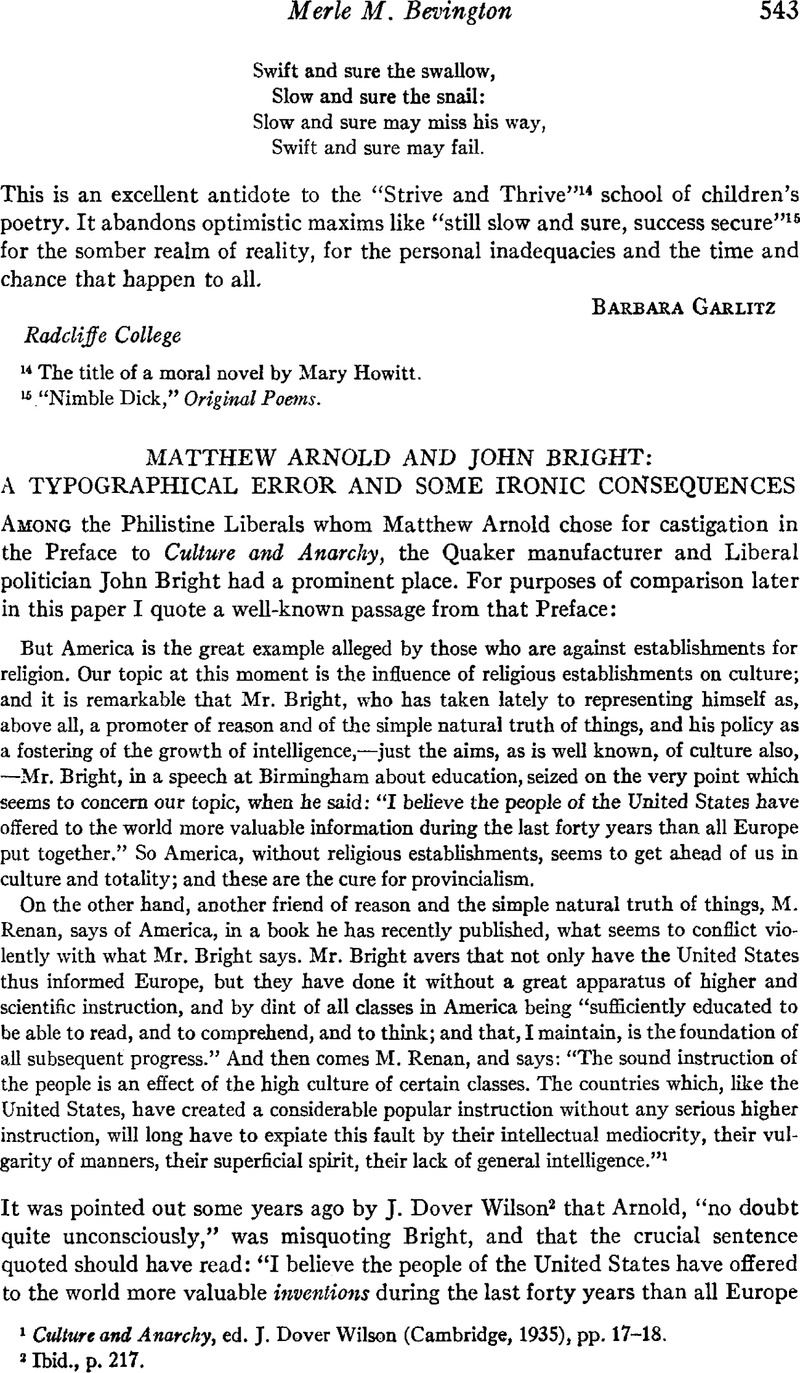No CrossRef data available.
Article contents
Matthew Arnold and John Bright: A Typographical Error and Some Ironic Consequences
Published online by Cambridge University Press: 02 December 2020
Abstract

- Type
- Article Commentary
- Information
- Copyright
- Copyright © Modern Language Association of America, 1955
References
1 Culture and Anarchy, ed. J. Dover Wilson (Cambridge, 1935), pp. 17–18.
2 Ibid., p. 217.
3 Thus in Public Addresses by John Bright, M.P ed. James E. Thorold Rogers (London, 1879), p. 62. The italics are Wilson's.
4 Times, 6 Feb. 1868; Public Addresses by James Bright, M.P., p. 62.
5 For the facts of succeeding paragraphs I depend, except where otherwise noted, upon F. W. Burstall and C. G. Burton, Souvenir History of the Foundation and Development of Mason Science College and of the University of Birmingham. 1880–1930 (Birmingham, 1930).
6 Cf. versions in Nineteenth Century, xii (Aug. 1882), 250, and in Discourses in America (London and New York, 1894), p. 132. The carefully chosen “perhaps,” “I believe,” and “I find” indicate that Arnold was more fully informed about Smith and Vassar than about Girton and Newnham.




